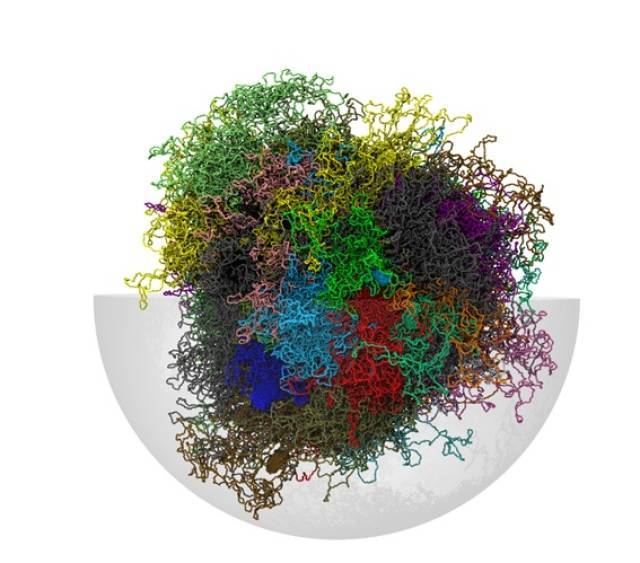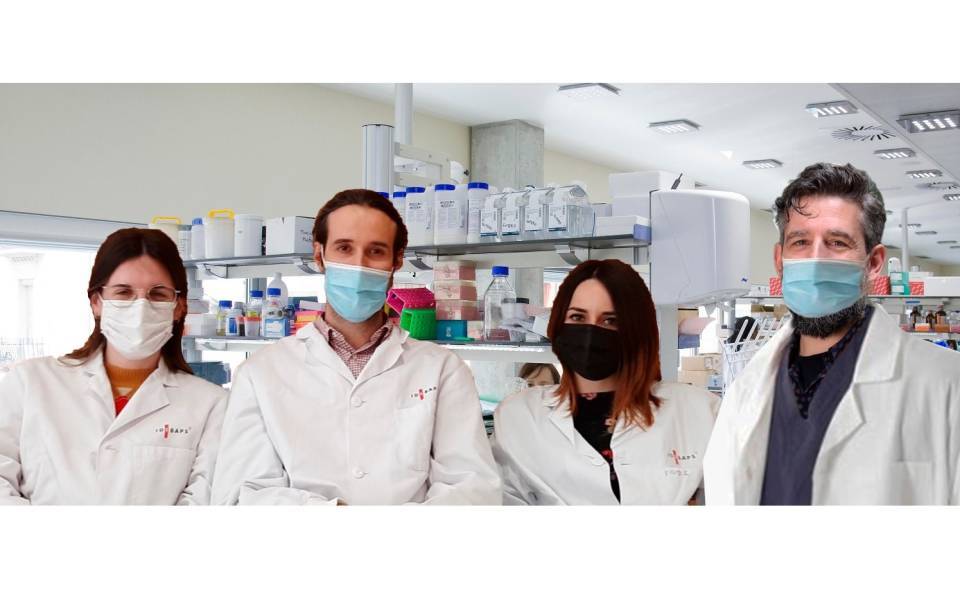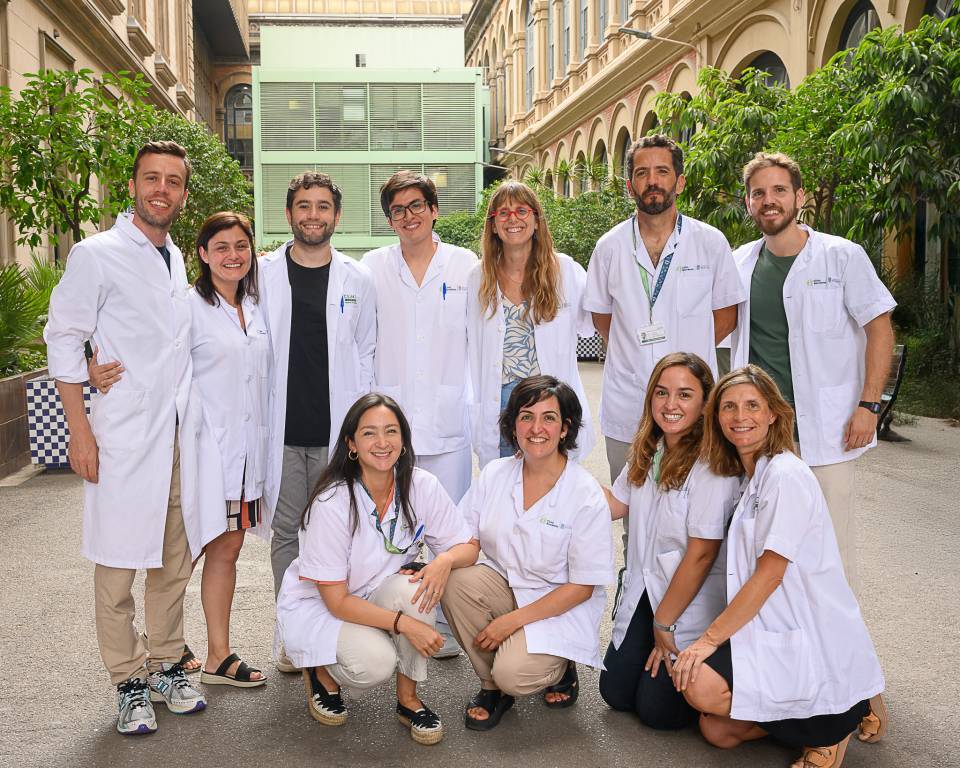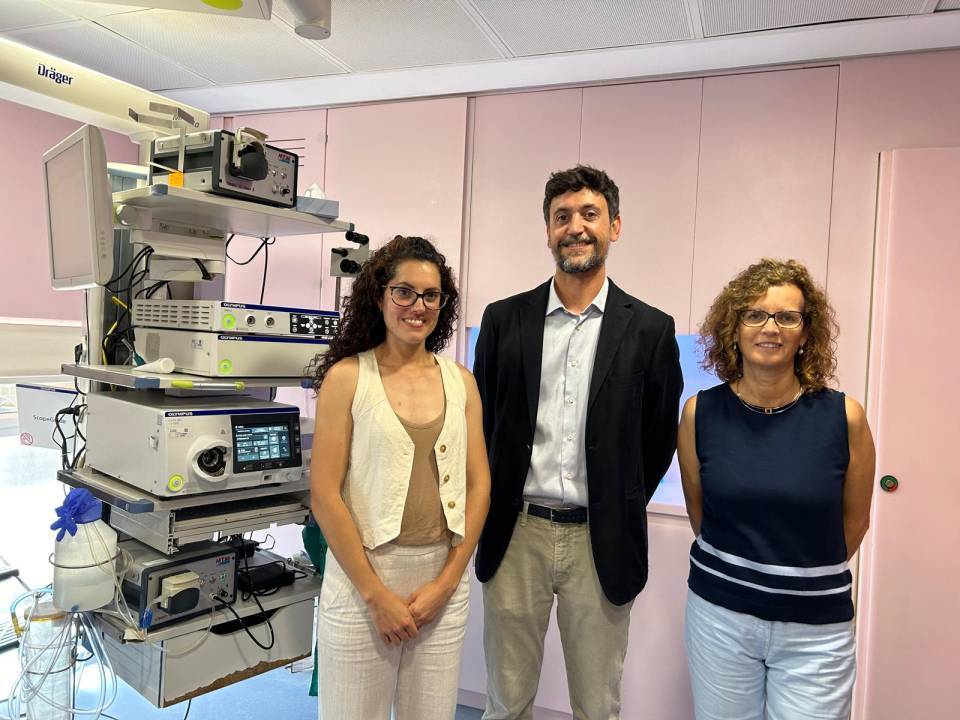The study was coordinated by the ICREA researchers Iñaki Martín-Subero, leader of the IDIBAPS Biomedical Epigenomics group and Marc A. Martí-Renom of CNAG-CRG. The lead authors of the study, published in the journal Nature Communications, are Roser Vilarrasa-Blasi and Paula Soler-Vila, doctoral students at both laboratories.
If we were to stretch out the human genome of each of our cells, it would measure two meters. These two meters of DNA are packed inside the cell nucleus and form a complex three-dimensional network. This 3D structure plays an important role in how the cell functions when determining which genes are expressed and which ones are silenced.
Using advanced molecular-biology and bioinformatics techniques, the researchers have described the initial 3D maps of the process of lymphocyte maturation and of two types of lymphoid cancer, chronic lymphocytic leukemia and mantle cell lymphoma.
Carrying out this ambitious project required the collaboration of the groups of Martín-Subero, an expert in the epigenetics of blood cancers, and Martí-Renom, an expert in structural genomics. According to Roser Vilarrasa-Blasi and Paula Soler-Vila, “neither of the two research groups had sufficient experience to carry out this study on their own. We worked side by side for several years to draw and interpret the 3D maps of healthy and cancerous lymphocytes. This study is a great example of the power of collaboration and communication between experts in different fields”.
Previous studies had shown that the genome within the nucleus is separated into two spaces, the active compartment and the inactive compartment, and the 3D maps are defined using this classification. According to Martín-Subero, “by analyzing the data on the 3D interactions of the genome and correlating them with other epigenetic markers, we found that it was more appropriate to classify the genome into three spatial components: the active and inactive compartments, and a new intermediate and very dynamic compartment that represents the bridge, the communication between the two".
The researchers have studied how the genome architecture changes in the maturation process of the lymphocytes, with unexpected results. Marc A. Martí-Renom says, “we have seen that approximately one-third of the genome’s 3D interactions changes during the physiologic process of lymphocyte maturation, which indicates that the 3D map of the genome is highly dynamic". In leukemias and lymphomas, continues Martí-Renom, “we focus on the fraction of the genome that does not change in normal lymphocytes in order to detect changes specific to leukemias and lymphomas. We could see that large blocs of DNA changed their 3D structure, and these blocs contain genes that are important for tumor development”.
According to the researchers, understanding the 3D map of the genome of leukemias and lymphomas is further step toward better understanding the molecular bases of cancer, but there is still a long way to go before we can talk about clinical applications. According to Iñaki Martín-Subero, “we should highlight the importance of doing basic research on cancer to subsequently translate the findings into clinical improvements. In this case, abnormalities in the 3D structure of the genome constitute a new area of vulnerability for cancer cells and are a promising therapeutic target.”

3D map of the genome
Study reference:
Vilarrasa-Blasi R, Soler-Vila P, Verdaguer-Dot N, Russiñol N, Di Stefano M, Chapaprieta V, Guillem Clot G, Farabella I, Cuscó P, Kulis M, Agirre X, Prosper F, Beekman R, Beà S, Colomer D, Stunnenberg HG, Gut I, Campo E, Martí-Renom MA, Martín-Subero JI. Dynamics of genome architecture and chromatin function during human B cell differentiation and neoplastic transformation. Nat Commun 12, 651 (2021).




